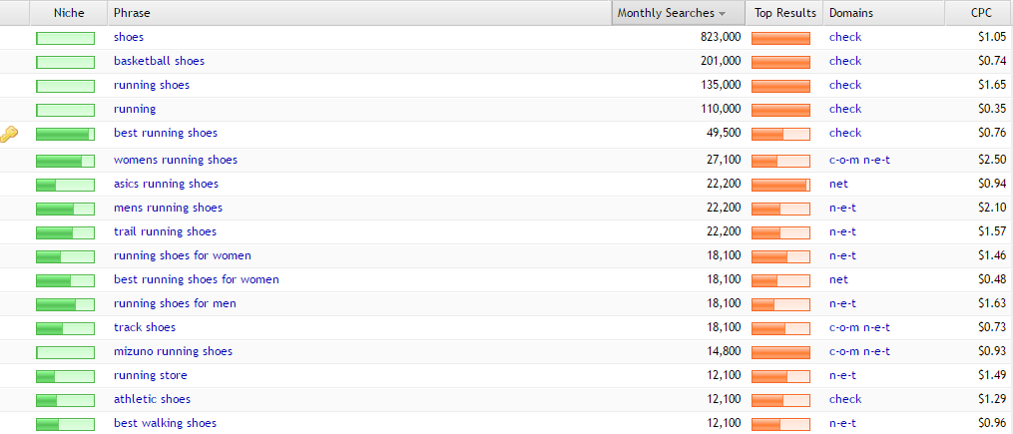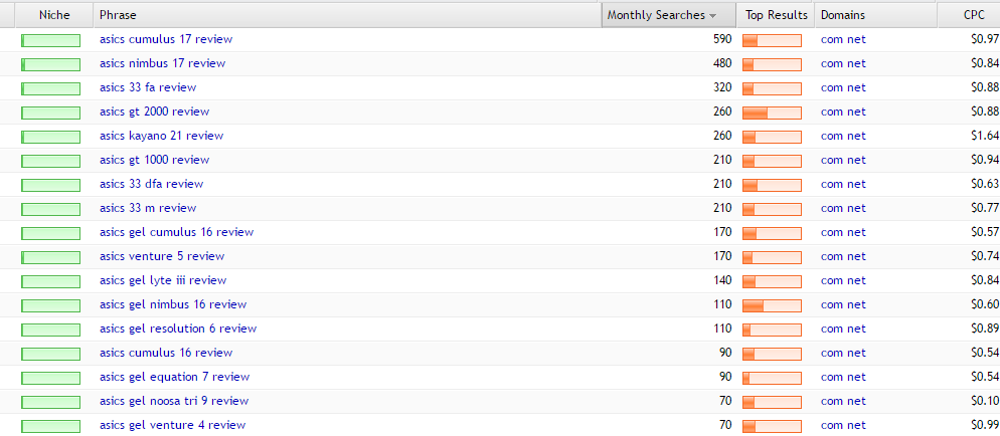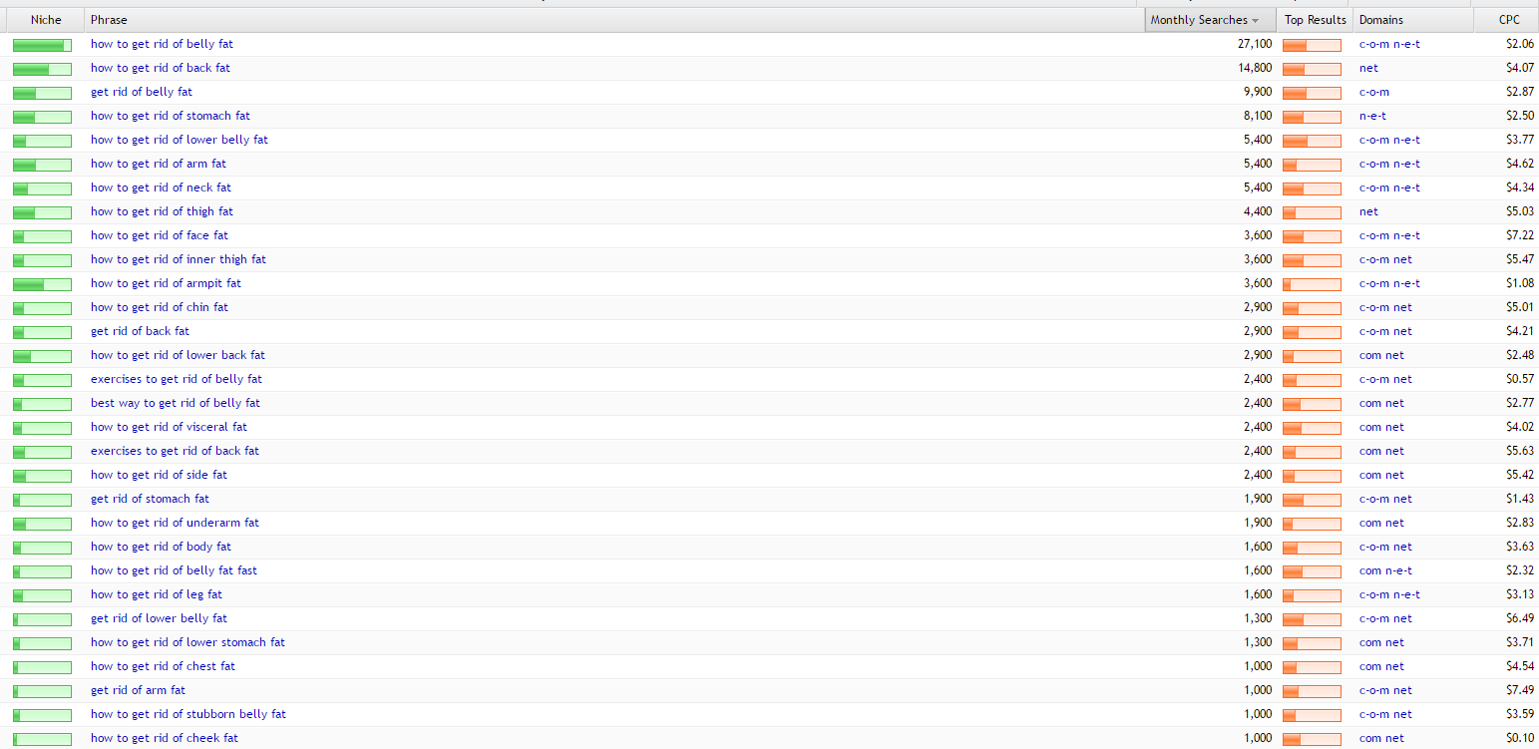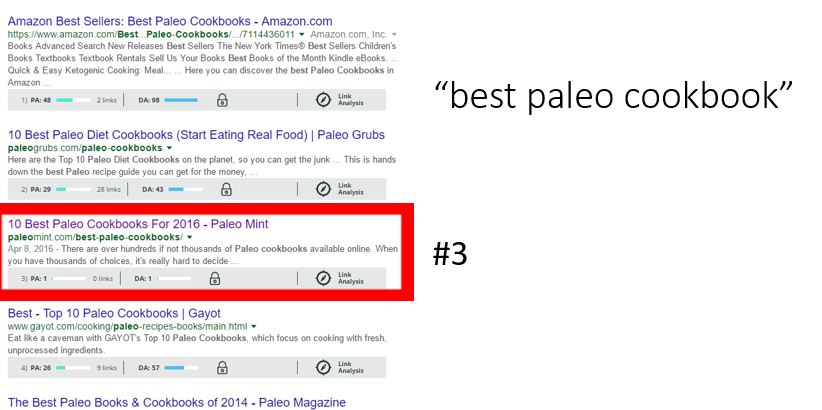Keyword research is the ultimate marketing validation hack. Finding the right keywords helps me quickly determine if I’m on the right track with a new site project.
As a digital entrepreneur, it makes sense to develop a particular expertise in this type of foundational activity.
This article is an orientation to the way our team approaches keyword research.
Disclaimer: This isn’t a “massive” guide on keyword research, BUT it is a SIMPLE way to GET STARTED QUICKLY.
Step 1 “Brainstorm”
 Many people use keyword tools as a way to brainstorm ideas. Our team doesn’t.
Many people use keyword tools as a way to brainstorm ideas. Our team doesn’t.
A keyword tool is a powerful machine, but they are not very intuitive or creative. Sure, you can get some results but without a clear focus and understanding, it quickly becomes information overload and “analysis paralysis”.
Believe it or not, your best ideas will come by just sitting down and brainstorming market niches. The more you move about your life consciously, the more you will start to recognize opportunities.
Example: Drones are in the news a lot these days. Without knowing a whole lot about the market, I can immediately recognize this as a potential market with a passionate following.
Another popular example is health and fitness (with plenty of sub markets). What types of fitness activities do you engage in? Zumba? Kickboxing? Running? All of these represent potential opportunities for a content based website.
Action Item: Sit down and brainstorm 10 broad markets (either trends you’ve observed in the news/people talking about or markets you have experience with). Another tip is to go on Amazon.com and view your recent shopping history.
Alternatively, If this is too much pressure, make a mental note to jot down ideas over the next week in your phone/tablet/notepad.
Step 2 “Understand the Way Your Market Speaks”
Learn the vocabulary of your prospective market! By understanding what the key operative terms are, you can conduct better keyword (re: “market”) research.
A keyword is defined as: “a word or concept of great significance.”
For the purposes of this exercise, I would add that it’s a “word or concept of great significance… to your audience“
Example: If you want to start a running authority site, understanding the important of various race types (half marathon, 5K, etc…) helps build a library of initial understanding.
Similarly, runners like to talk about certain minute/mile ratios (a 6 minute mile, sub 12, etc…).
If we keep going with this, start thinking about the different kinds of runners. There are road runners, trail runners, etc…
Action Item: Write down the “key” words and concepts within your selected niche.
Step 3 “It’s All about User Intent”
Certain keywords are better than others. Words have meaning. The closer you can can get to solving the users specific query, the more success you will have.
“High intent” keywords should make up the backbone of your website. These are your “pillar” articles. Think of it as a funnel. At the top are shallow generic keywords with minimal intent. The more modifiers used as part of a phrase, the more intent is demonstrated.
Example: the term “best running shoes for marathons” is more useful than just “marathon running shoes”. Similarly, the term “lose weight” might seem to have plenty of volume, but “get rid of back fat” is far more intentional.
Some modifiers have proven to be more valuable than others. Below is a list of some of the better ones:
- “Best”
- “Best” X “for” Y
- X “vs” Y
- “how to”
- “get rid of”
- “training”
- “review”
- “under” $X
- “alternatives”
- “alternative to”
- “learn”
These are just a few examples, but whole review sites have been built on JUST one of these modifiers. A good example is TheWirecutter which relies just on the “best” modifier.
Step 4 “Get the Right Tool”
There are many keyword tools out there to use. Many do a decent job.
Here are the things I look for in a good keyword tool:
- Ability to return lots of data, quickly: part of the difficulty getting momentum with keyword research is having a slow or sluggish tool.
- Ability to return a quick “competitiveness score” for each result: This is where the true “value” of a keyword tool comes into play.
- Ability to filter/sort by various criteria: A whole lot of data without any way to slice and dice it, makes life a lot more difficult.
- Ability to manipulate queries by Google Suggest: In particular, “prepend”, “append”, and “add in between words”. This is critical for the type of keyword research our team does.
There’s only one I’ve found that does exactly what I need.
Introducing, SeCockpit!
I would love it if you signed up via my link here (I do receive a commission), but it does not impact the price you pay.
Bottom Line: It’s the only tool that hits all of the criteria I’ve listed above (Yes, I do think it’s better than LongTailPro…more on that in an upcoming post).
Action Item: Go sign up for SeCockpit. The next phase relies exclusively on this tool. Make sure you sign up for the “Pro” version, which contains the right mix of features for this guide.
Step 5 “Filter, Filter, Filter…”
There is no question that for any keyword search, you want to focus on the “high intent” keywords (some of which I listed in Step 3). It’s also not a secret that you want to go after low competition keywords that still have a decent search volume.
The key criteria is as follows:
- Low competition (Domain Authority below 30…ideally below 20)
- Reasonable search volume (ideally above 500-1000 searches per month for “best” style keywords)
The real issue is that Old “seed keyword” research is broken… Even the thought leaders teaching it today, at least in part, rely on this method. The example of “old” keyword research would be as follows:

As you can see in the above example, “best running shoes for women” get’s 18,100 searches per month. This is great! However, it’s also fairly competitive. Ideally, I want to see the bar competitiveness orange bar less than 1/3rd full.
The other keywords are not very targeted (high intent), meaning that we don’t really know if the searcher is ready to buy.
It will take pages of digging to find other relevant “best” keywords. Unfortunately, this is how most people do keyword research. It’s no wonder that many people give up, or settle for insanely competitive keywords (or resort to risky “black hat SEO” as a core component of their strategy).
In summary, the old way of doing keyword research is problematic because…
- Too much irrelevant data (few “high intent” keywords)
- Time consuming (why most people don’t like keyword research)
- Comparative ignorance (hard to compare niches to see which to enter first)
The Right Way to Do Keyword Research?
Even the best keyword tool still is only as good as the operator manipulating the terms. There are many ways to filter using SeCockpit, but here are some of the “hacks” to accelerate the niche selection process. They are the “append”, “prepend” and “add in between words” options within the tool.
See the following as an example of using “prepend” + “add in between words” with the same seed keyword of “best running shoes”

A LOT more interesting, right?
From this keyword search I’ve quickly jotted down the following “interesting” terms worth targeting:
- “best neutral running shoes” – 1600m
- “best minimalist running shoes” – 1600m
- “best running shoes for overpronation” – 1600m
- “best running shoes for wide feet” – 1300m
- “best running shoes for shin splints” – 1000m
- “best running shoes for bad knees” – 1000m
- “best cheap running shoes” – 1000m
- “best running shoes for supination” – 1000m
That’s an incredible list of HIGH INTENT and low competition keywords worth targeting for a running authority content site.
The advantages of this model:
- Much faster (1 minute or less)
- High level view of the best keywords
- Minimal “noise” or distracting keywords
- Almost instant niche/market validation
Here are some other examples using various manipulations…

For “review” keywords – unlike “best” keywords – I’m comfortable with a much lower search volume. Since it’s highly targeted (re: very close to the final purchasing decision), anything 100 searches per month and above is interesting.
Another example of a traditionally HIGHLY competitive niche (fat loss), using this method:

As you can see, virtually ALL of these keywords are super low competition with good volume. Fat loss authority site? Any takers?
And lets look at another site in the “Paleo” space, another super popular niche these days…

Not as many high volume terms, but still highly focused on the key user intent terms.
As a quick validation, I looked at the term “best paleo cookbook” in Google Search:

That’s a Domain Authority (DA) of 1!!! Ranking in the top 3 for a 1300m high user intent keyword. Literally WIDE OPEN niche.
Action Item: Use SeCockpit with a high intent “best” keyword phrase for 5-10 different niches that you’ve previously identified in the “brainstorm” step.
Step 6 “Validate Quickly and Compare Niches”
Another common problem for people thinking of launching content sites is which market to enter first..
This approach makes it relatively easy to compare different niches and data sets for an “apples to apples” comparison.
Example: For the niches we looked at, I’d be more inclined to “go after” the running niche or the fat loss niche, over the Paleo niche, but this depends on the monetization strategy in play (more on that in future posts).
Action Item: Compare the data from Step 5 to determine the top market opportunity to go after based on the lowest competition with the highest cumulative search volume (of all the “high intent” terms). Make a priority list and save it somewhere. Put your searches into “projects” using the folder categorization options on the left hand navigation bar within SeCockpit.
Step 7 “Take Notes for Future Use”
This is key. As mentioned in the Step 6 action, it’s important to keep track of your searches. This will help you better compare markets over time. It will get to the point where a “quick glance” at a search result in SeCockpit will lead to almost instant validation (based on prior knowledge).
We like to keep a repository of all the different “site concepts” with different headings for “review” keywords, “best” keywords, “vs” keywords, etc…
Step 8 “TAKE ACTION”
Building profitable content based websites is simple. That doesn’t make it easy.
“The #1 characteristic I have observed with those who are successful, is the execution.”
A few rules:
- There are no perfect markets (stop looking for the unicorn)
- There is no time like today (seriously, time is the most valuable commodity you have)
- Keep it simple (It’s simple, not easy….don’t make it complicated)
- Aim high (don’t be afraid to set lofty goals)
Stay up to date with Keyword Research

